2022 Research Report: Artichokes for the Northeast
Peyton Ginakes, University of Maine Cooperative Extension Research Associate
Mark Hutton, University of Maine Cooperative Extension Vegetable Specialist
David Handley, University of Maine Cooperative Extension Small Fruit and Vegetable Specialist
The second year of an artichoke trial was conducted at Highmoor Farm in Monmouth, ME in 2022. The purpose of the evaluations was to obtain additional data towards development of production guidelines and artichoke cultivar recommendations for Maine farmers. Eight artichoke cultivars were compared for marketable bud production, and a separate experiment was conducted to evaluate the effect of black mulch, reflective mulch and bare ground culture on artichoke production.
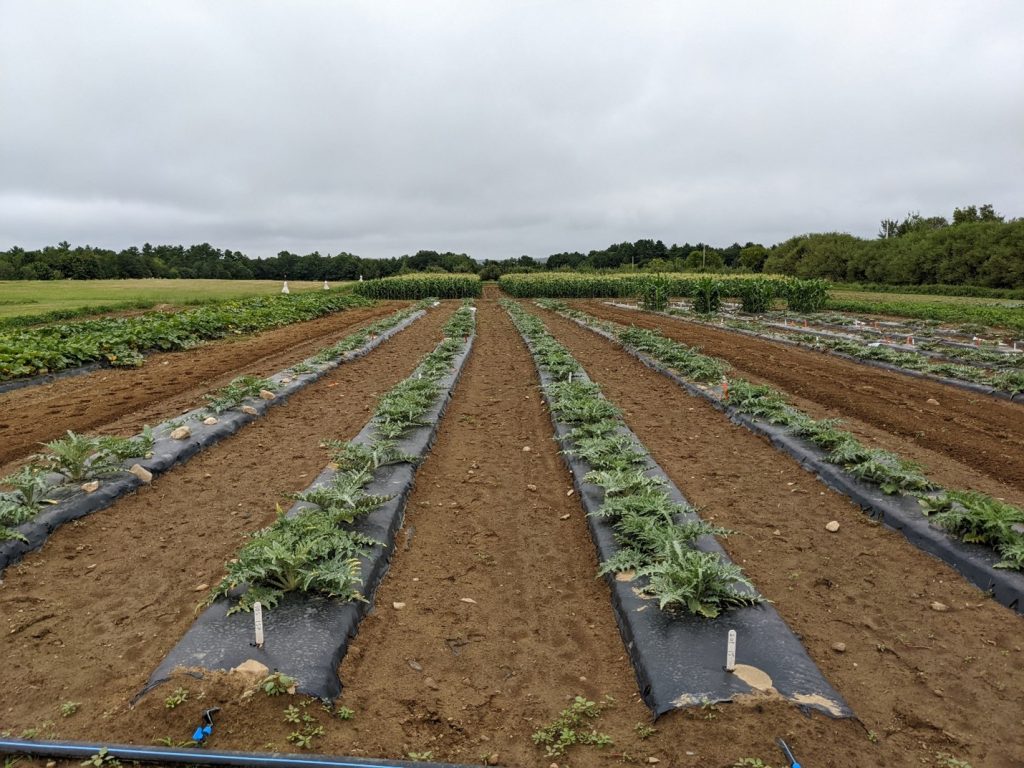
Seedling Production and Vernalization
Artichokes for the mulch and cultivar evaluations were seeded on March 23 into 50-cell trays filled with Coast of Maine Organic Seed Starting media at one seed per cell. Trays were placed on 75 ˚F heating mats for 2.5 weeks, until full germination. Seedlings were fertilized twice with 1 Tbsp/gal of 12-45-10 Nutriculture Spoon-Feeding soluble fertilizer, once 7 weeks after seeding (May 11), and again immediately before transferring to cold storage for vernalization (May 23).
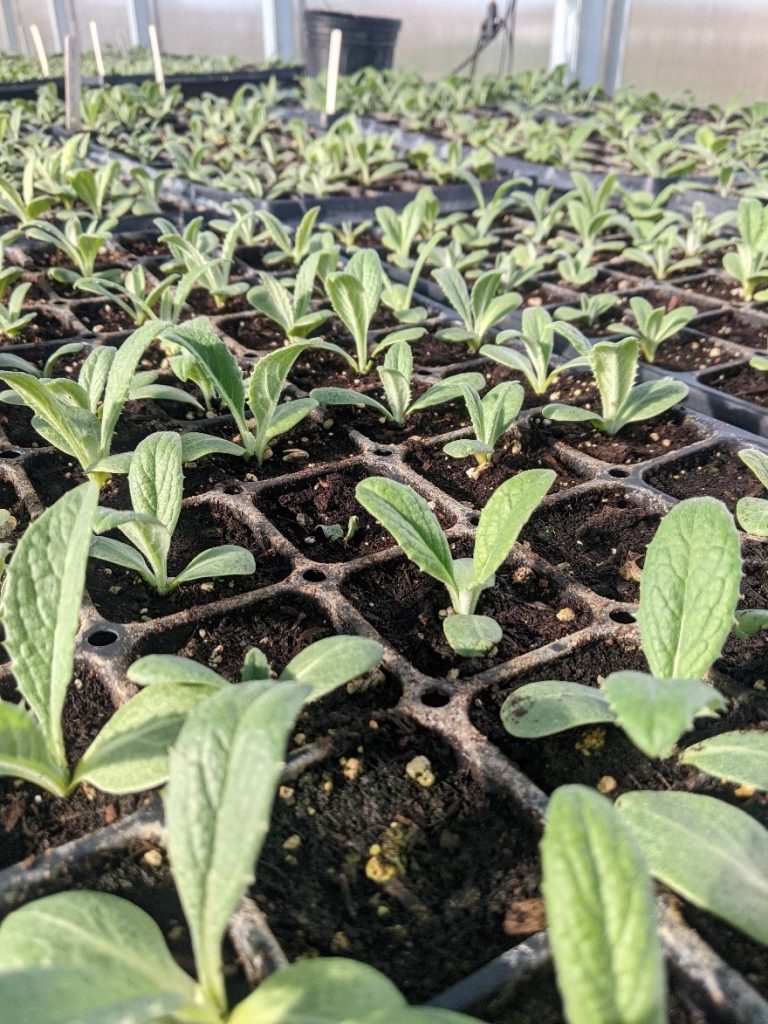
Seedlings were vernalized nine weeks after sowing, at approximately 4-6 true leaf stage. Cultivar evaluation seedlings were transferred to a 45 ˚F cooler for 13 days, and those for the mulch trial were placed in a 36 ˚F refrigerator for 13 days. Neither vernalization environment was artificially lit. After vernalization, seedlings were lightly watered and moved to a shady outdoor area to harden off, where temperatures ranged from 51 to 71 ˚F. All seedlings were transplanted by hand using a jab planter the next day, June 7 (76 days after seeding).
Field Preparation
Beds were amended with 500 lb/ac of 10-10-10 fertilizer and tilled to incorporate on June 1, six days before transplanting. The day before transplanting, raised beds were shaped and covered with black on white Bio360 biodegradable plastic. Drip tape was buried left of center under each bed. To evaluate the different mulch treatments, immediately before transplanting, the following treatment-specific bed adjustments were made to mulch trial plots: 1) black plastic mulch plots were left as they were, 2) black plastic was removed for bare ground plots, and 3) black plastic was removed and replaced with reflective mulch in their respective plots.
Mulch Trial
Artichoke production of plants grown on bare ground, black plastic much or reflective mulch was compared. In 2021, we found that artichokes grown on bare ground and black plastic mulch produced greater yields than those grown on straw mulch, likely because these systems allow for better weed control. Therefore, we substituted the straw mulch treatment from our 2021 trial with a reflective mulch treatment. Adding a reflective mulch treatment to the trial was also the result of notable aphid pressure in 2021, which damaged early plant growth. We hypothesized that 1) black and reflective mulches would result in greater weed control, increasing yield relative to bare ground artichoke production, 2) reflective mulch would mediate extreme soil temperatures relative to black plastic, increasing artichoke yields, and 3) reflective mulch would reduce aphid populations, leading to increased plant vigor and yield.
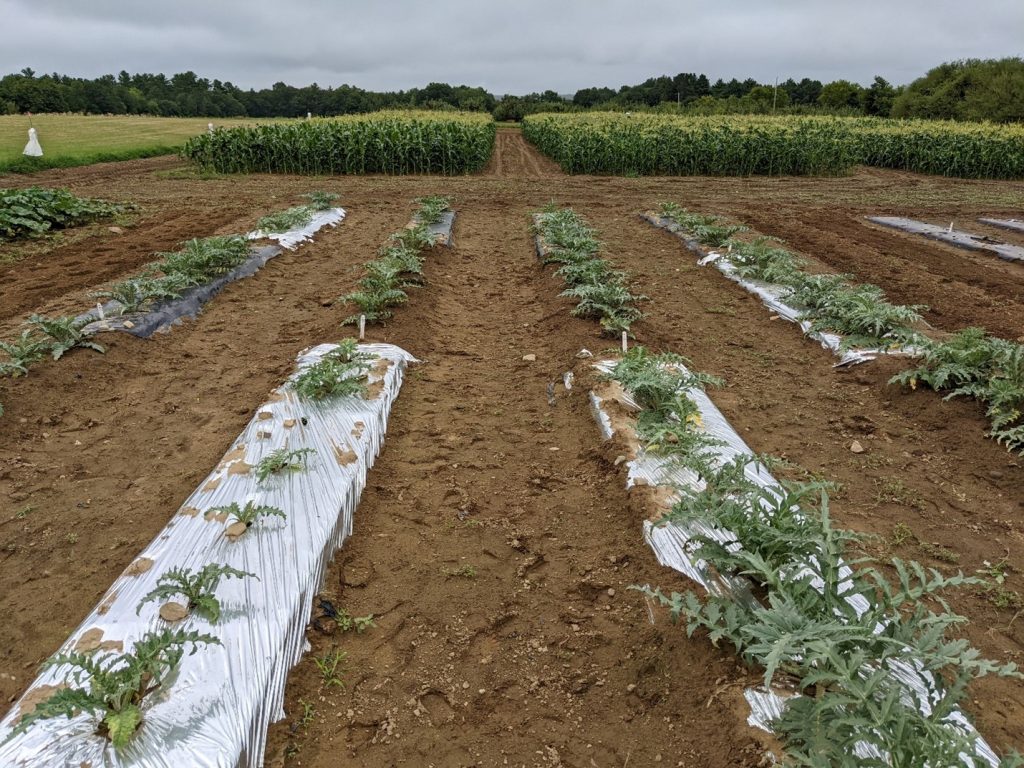
Mulches were arranged in a randomized complete block design with four replications. Each plot was 14’ long, containing seven Green Globe Improved artichoke plants spaced 2’ apart in single rows. After transplanting, plants were immediately watered in with 1 cup of 12-45-10 Nutriculture Spoon-Feeding soluble fertilizer (1 Tbsp/gal). Plots were irrigated as needed, and fertigated once (August 1, 55 days after transplanting) using the same Nutriculture soluble fertilizer solution at 1:64 dilution. Plots were kept free of weeds by hand and flame weeding.
Artichoke harvest began August 29 (83 days after transplanting) and continued weekly or biweekly, as needed, until October 12. Marketable buds from the central five plants of each plot were clipped with 2-3” of stem attached using hand pruners, and sorted into the following USDA size classes: 48s (3-3.5”), 36s (3.5-4”), 24s (4-4.5”) and 18s (>4.5”). Buds smaller than 48s were categorized as “very small”. Number of buds and weights were recorded for individual plants. Plants produced well until a hard freeze, although frosts prior to the final harvest date did cause some peeling of the epidermis on outer bracts.
Mulch Evaluation
Plant survival was high following transplanting in all mulch treatments. However, the proportion of plants that produced buds was low, ranging from 5% on black plastic to 30% on bare ground (Figure 4). The proportion of Green Globe Improved plants that produced buds was much lower compared to 2021. It is unclear why so few plants produced artichokes. The number of required chilling hours may not have been achieved, the lack of artificial light during cold exposure may have inhibited proper vernalization, or devernalization may have occurred as a result of hot summer temperatures.

Yields were extremely low in all mulch treatments (Table 1). Plants on bare ground and black plastic mulch produced only 18% and 5% of their total marketable 2021 yields, respectively. Due to considerable variability within treatments, there were no statistically significant yield differences in any bud size class or in total, despite large numerical differences. Still, the total marketable yield of flowering plants grown on reflective mulch was approximately double that of those grown on black plastic or bare ground.
Cultivar Evaluation
Eight artichoke cultivars were evaluated in a randomized complete block design with four replications (Table 2). Per standard practice, all artichokes were grown on black plastic mulch. This cultivar trial was managed using the same cultural practices as used in the mulch trial, except plots were 24’ long (12 plants) with data collected from the central ten plants. Data were otherwise collected in the same manner as in the mulch trial.
Harvest began on August 22. Green Globe Improved and Colorado Star were the earliest cultivars to reach maturity (76 days after transplanting), while Imperial Star Purple and Wonder were the latest (94 days after transplanting). Romanesco plants were less vigorous than other cultivars.
The percentage of plants that produced buds was low, ranging from 3% for Wonder to 33% Colorado Star. The large amount of variability within cultivars obscured statistically significant differences in flowering.
Marketable yields were low for all cultivars and varied considerably (Table 3). Total marketable yield ranged from 32% (Wonder) to 130% (Colorado Star) of 2021 yields for those cultivars grown in both years, with Colorado Star being the only cultivar with greater yields in 2022 than 2021. This difference between the two years is driven primarily by the fewer very small buds harvested in 2022.
Despite drastic numerical yield differences between cultivars, the variability between plots was too great to confidently draw conclusions about cultivar yield differences. This within and between cultivar variability can likely be attributed, at least in part, to an early final harvest date. Had a final catchall harvest been conducted, that may have captured additional yield of some of the later-maturing cultivars, like Wonder and Imperial Star Purple.
Visual Observations of Cultivars Not Included in 2021
Imperial Star Purple:
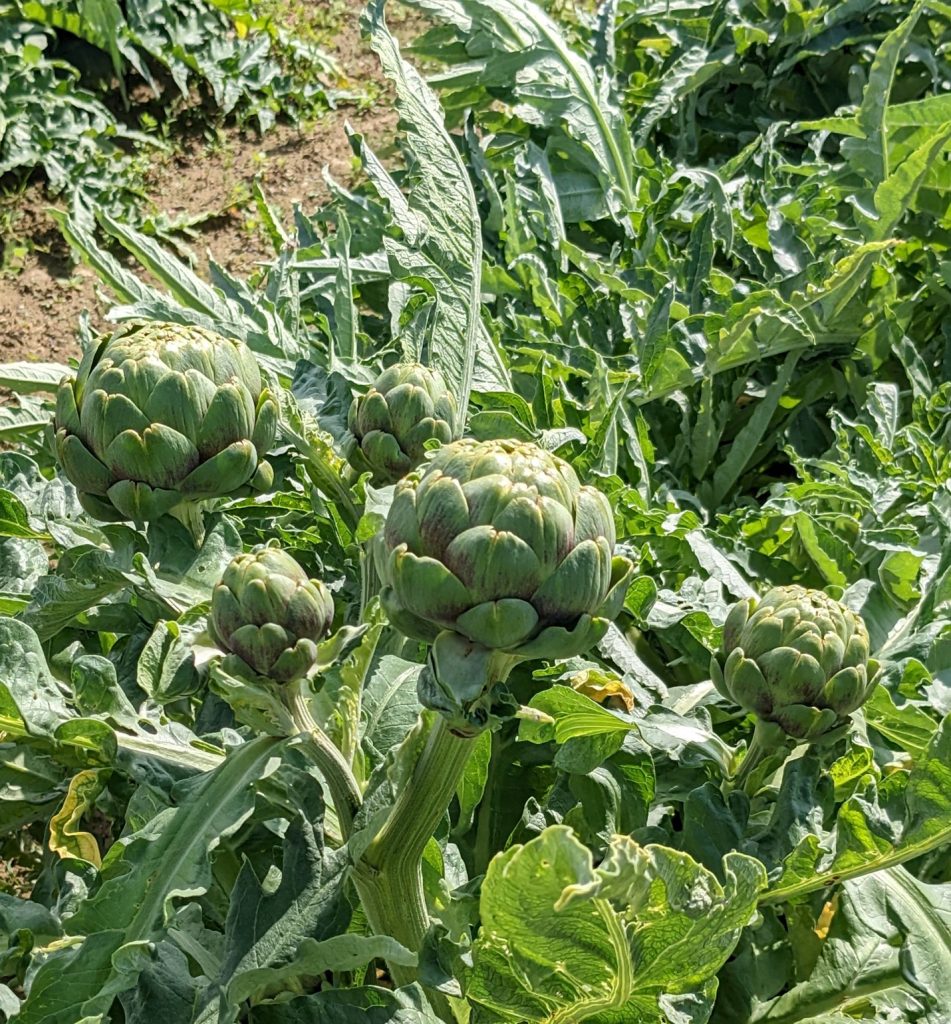
Romanesco:
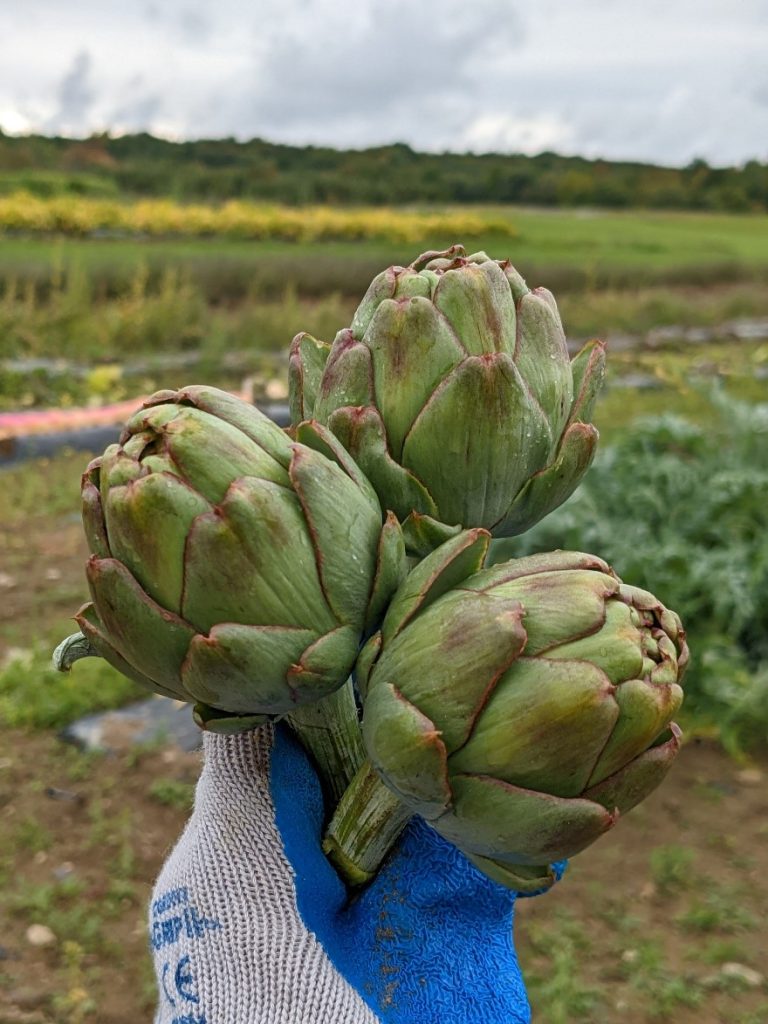
Violetto:

Acknowledgments
This work was supported by the University of Maine Agricultural and Forestry Experiment station, the Maine Vegetable and Small Fruit Growers Association, and Hatch ME022320. High Mowing Seeds and Coast of Maine generously donated materials for this project. We are grateful for assistance from Greg Koller and Patricia McManus, and field assistants Jonathan Brenner, June Foyt, Ethan Handley, Lydia Handley, Lee Lavoie, Abigail Lucas, Brooke Martin, and Karla Mendoza.
For any questions or comments on this research, please contact Peyton Ginakes at peyton.ginakes@maine.edu or Mark Hutton at mark.hutton@maine.edu or 207.933.2100.
Download and Print:
Information on this website is provided purely for educational purposes. No responsibility is assumed for any problems associated with the use of products or services mentioned in this website. No endorsement of products or companies is intended, nor is criticism of unnamed products or companies implied.
In complying with the letter and spirit of applicable laws and pursuing its own goals of diversity, the University of Maine System does not discriminate on the grounds of race, color, religion, sex, sexual orientation, transgender status, gender, gender identity or expression, ethnicity, national origin, citizenship status, familial status, ancestry, age, disability physical or mental, genetic information, or veterans or military status in employment, education, and all other programs and activities. The University provides reasonable accommodations to qualified individuals with disabilities upon request. The following person has been designated to handle inquiries regarding non-discrimination policies: Director of Equal Opportunity, 101 Boudreau Hall, University of Maine, Orono, ME 04469-5754, 207.581.1226, TTY 711 (Maine Relay System).
